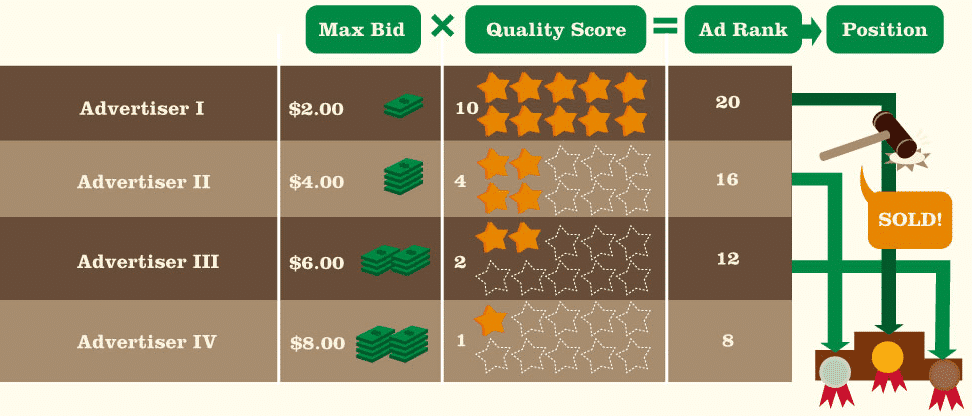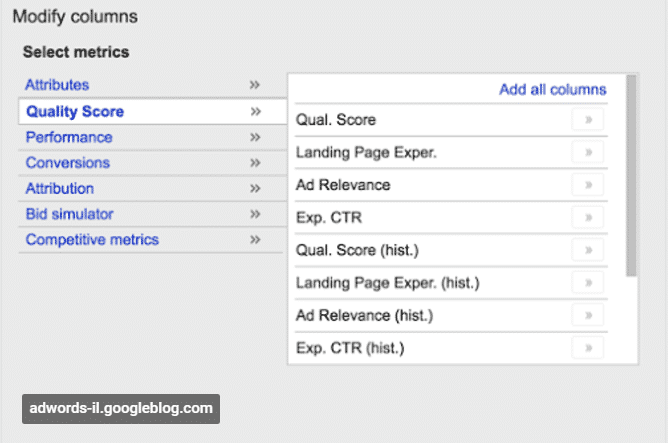by Joshua Griffin • January 23, 2018
How to Advertise on Google: Taking Your First Steps with AdWords
Google Ads can be daunting, especially for first-timers or those who haven’t had much experience. Trust me, I’ve been there. You may be asking, “What is the point of bidding? There’s an auction for keywords? Why won’t a large bid guarantee an ad spot on Google?”
But don’t worry! If you want to learn how to advertise on Google, you’ve come to the right place.
In this article, we’ll give you a quick overview of how to advertise on Google and the basics you need to understand before you start running ads.
Advertising on Google with Google Ads is one of the best decisions you can make to expand your reach, find new customers, and grow your business. Google AdWords is the world’s largest and most widely used online advertising platform, and by advertising on Google, your business can reach a potential audience of millions.
How to Advertise on Google with Google Ads
To advertise on Google with Google Ads, you’ll need a Google Ads (formerly known as Google AdWords) account. Advertising on Google with Google Ads requires a Google Ads account, which you can create for free on the official Google Ads page.
Of course, creating your Google Ads account is just the first step. Next, you’ll actually need to create your campaigns.
Here is an eight-step process for creating your first campaign(s) on AdWords (click on the link in each step to learn more):
- Decide what your goals are
- Create your buyer persona(s)
- Research your keywords
- Choose your budgets and bids
- Build out your campaign structure
- Write your ad copy
- Design and publish landing pages
- Set up conversion tracking
For a step-by-step guide to creating your first campaigns, check out this video:
Simple enough, right? Unfortunately, while it’s fairly easy to start advertising on Google, successfully advertising on Google is another story.
Covering every possible optimization nuance is beyond the scope of this article (but check out the rest of our blog for hundreds of tips you can use to get the most out of your campaigns), so in this article, we’ll focus on the keystone of Google’s advertising system: the auction process.
How Advertising on Google Works
Google Ads is a pay-per-click (PPC) advertising platform, which means you pay to drive traffic to your website and/or landing pages. However, advertising on Google isn’t as simple as saying, “I want to pay X for every click.”
Unfortunately, you’re not the only business out there who wants clicks from Google users. To make sure that your ads are seen, you have to outbid the competition. The Google auction is a lot like any other auction, except that Google cares about more than just your money—they also take the relevance and quality of your ads into account.
So, if you create high-quality ads, you can potentially pay less per click than the competition…and still outrank them!
Unlike display advertising, where you bid to have your ads displayed on various sites across the web, Google Ads advertisers bid on specific keywords in the hopes of having their ads show up when potential customers search for those keywords on Google.
Depending on the quality of their ads and their maximum bid, Google decides what order ads are displayed to users in and then it’s up to your ad to catch a potential customer’s eye and convince them to click.
The Auction Process
When most people think of an auction, they imagine shelling out tons of money to buy the item that they want. Google Ads auctions do not work that way. Instead, you bid on a keyword that you think will be relevant to searches.
In a Google Ads auction, you can bid virtually any amount, but keep in mind that Google Ads is a PPC-based platform, so it can be expensive, especially if you don’t know what you’re doing.
In fact, there is no guarantee that your ad will even appear! (but more on that later.)
When someone does a search that includes one of your target keywords, Google will look at the keywords that you bid on and will decide which words are relevant to the words which were just searched. It’s important to note that Google will not suggest a useless advertisement to someone using their website. That could hurt their credibility and it would make you pay for useless words. That’s why being relevant is important.
Google Ad Rank
Ad rankings determine where your ad is placed on the Google results page (if it is even placed on there at all!), which can be a little confusing for a lot of us.
But don’t worry, it’s not as complicated as it sounds.
Ad ranking makes it possible for your ad to be visible to users who are searching for specific products. Advertisement visibility can lead to clicks which can lead to conversions, so making sure that you rank high important. But how do you do that? Well, there is an equation for that.
This may seem confusing, but I promise, it gets easier.
There are three parts to Ad Ranking that we need to look at before understanding everything. One: Maximum Bid; two: Quality Score; and three: Format and Extensions.
Maximum Bid
This area is pretty cut-and-dry. The maximum bid is the highest amount that you are willing to bid on a keyword that you want to have in the “auction”, so to speak. The more words you have in the auction, the higher your chances are of having a hit.
Again, these words are important because they will give users a chance to see your advertisement as long as it is relevant to what they searched, so choose wisely.
Like I mentioned before, although you may have a high bid, it doesn’t guarantee that your ad will be seen.
Quality Score
Google wants to make sure that its consumers are seeing relevant ads. To do that, AdWords assesses your website, keywords, and landing pages to see how well they are designed.
That is what constitutes your quality score, or the rating that Google gives you based on the relevance of your PPC ads regarding what was searched.
Your rating is anywhere between one and ten. (Ten being the best, one. . . needing some hard work.) The higher your rating the better.
This is what really counts.
If you have a high quality rating, even if you don’t pay the highest bid, odds are that your ad will be seen. Remember the equation for success: Maximum Bid * Quality Score = Ad Rankings/Ad Visibility. Hopefully, that improved ad visibility leads to conversions.
To keep an eye on your quality score, you’ll need to click “Add columns” and add quality score as a column to your Google reports.
Ultimately, how much you spend on Google AdWords and how effective that spend is all boils down to the picking the right keywords, choosing the right bids and creating high-quality ads. The AdWords auction process is designed to encourage you to create effective ad campaigns, so the better your advertising is, the better your quality score should be!
Conclusion
All-in-all, it’s not hard to advertise on Google. Making money from your Google Ads advertising is more of a challenge, but if you understand the auction process, it should be easy to identify ways to improve your advertising (again, for specific recommendations, check out the links in that 8-step process I mentioned or do a specific search on our blog).
By the way, if you’d like help putting together your first Google Ads campaigns (or want more insights into the auction process), let me know here or in the comments. I’d love to help!
Excited to advertise on Google? Have advice to share with new advertisers? Leave your thoughts in the comments!






